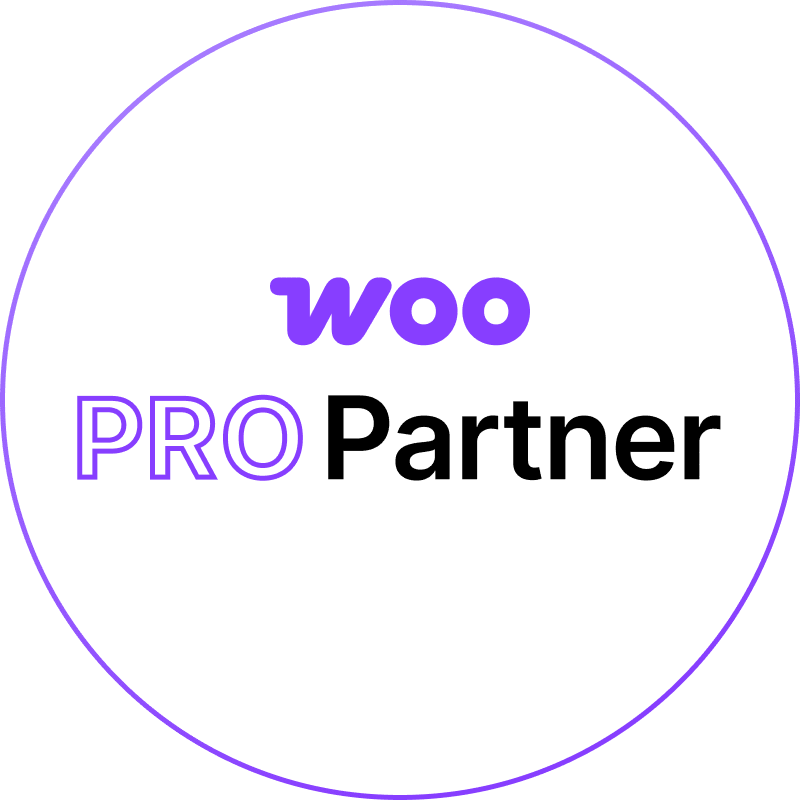Social Media Marketing vs. Traditional Marketing: Where Should You Invest?
Marketing has come a long way from the days of print ads, billboards, and radio spots. With the advent of digital platforms, businesses now have an unprecedented ability to connect with their audience through social media. However, with so many options available, deciding where to allocate marketing resources—traditional marketing or social media marketing—can be challenging.
Traditional marketing relies on time-tested methods like TV commercials, direct mail, and print ads to reach large audiences. In contrast, social media marketing leverages platforms like Instagram, Facebook, and TikTok to engage audiences in real time and create personalized experiences. Both approaches have their strengths, but which one is right for your business? Understanding the differences and benefits of each can help you make an informed decision.
While some businesses may benefit from a hybrid strategy that combines the two, others may find greater success focusing on one. By partnering with a social media management agency, businesses can create targeted, data-driven campaigns that deliver measurable results, making it easier to navigate today’s competitive marketing landscape.
Defining Traditional Marketing
Traditional marketing encompasses advertising methods that have been used for decades, such as print advertisements, television and radio commercials, direct mail, and outdoor billboards. These strategies are designed to reach large audiences through broad channels, making them particularly effective for building brand awareness on a wide scale.
One of the key advantages of traditional marketing is its ability to make a lasting impression. For example, a well-produced TV commercial during a prime-time slot can capture the attention of millions of viewers. Similarly, a full-page magazine ad can resonate with readers long after they’ve put the publication down. Traditional marketing is often perceived as more authoritative and credible, particularly in industries like luxury goods and healthcare, where trust and prestige play a significant role.
However, traditional marketing also comes with limitations. It can be costly, especially for small businesses, and its effectiveness is often difficult to measure. Unlike digital campaigns, which provide real-time analytics, traditional marketing relies on estimated reach and indirect feedback, making it challenging to determine ROI. Additionally, traditional campaigns are less flexible, requiring significant lead times for production and distribution.
Defining Social Media Marketing
Social media marketing has transformed the way businesses connect with their customers. By using platforms like Instagram, LinkedIn, and TikTok, companies can engage their audience in real time, build relationships, and create highly targeted campaigns. Social media marketing allows for two-way communication, enabling businesses to interact with customers directly through comments, direct messages, and live events.
One of the biggest advantages of social media marketing is its affordability. Even with a modest budget, businesses can run highly effective campaigns that reach the right audience. Social media platforms offer advanced targeting options, allowing businesses to refine their audience by age, location, interests, and even online behaviors. This level of precision ensures that your marketing efforts are reaching the people most likely to convert into customers.
Social media marketing also provides unparalleled opportunities for creativity. From short-form videos on TikTok to interactive polls on Instagram Stories, businesses can experiment with different formats and tailor their content to match the preferences of their audience. Moreover, the ability to track performance metrics in real time means businesses can quickly adjust their strategies to optimize results.
Despite its many advantages, social media marketing is not without its challenges. The fast-paced nature of social media requires businesses to produce content consistently, which can be time-consuming. Additionally, maintaining a strong presence across multiple platforms can be overwhelming without the right tools or expertise. This is where a social media management agency can be invaluable, helping businesses streamline their efforts and maximize their impact on social platforms.
Cost Comparison
When deciding between traditional and social media marketing, cost is often a critical factor. Traditional marketing methods, such as TV commercials, radio ads, and print advertisements, tend to have high upfront costs. For example, producing a high-quality television commercial can require a significant budget for production, distribution, and prime-time airplay. Similarly, billboard advertising or full-page magazine spreads can cost thousands of dollars, which may not be feasible for smaller businesses.
In contrast, social media marketing offers a more cost-effective solution. With tools like paid ads on platforms such as Facebook, Instagram, and TikTok, businesses can start campaigns with as little as a few dollars a day. Organic posting, while requiring time and effort, doesn’t carry the direct financial costs of traditional media. Social media marketing also provides a higher degree of control over how and where your budget is spent. You can adjust ad spend in real time, allocate funds to high-performing campaigns, and pause underperforming ads instantly—features that are virtually impossible with traditional media.
The affordability of social media marketing doesn’t mean sacrificing results. In fact, many businesses find that social media campaigns deliver better ROI because of their precise targeting and real-time feedback. For businesses looking to stretch their marketing budgets while reaching a targeted audience, social media marketing is often the smarter choice.
Audience Targeting
One of the most significant advantages social media marketing has over traditional marketing is its ability to target specific audiences with unparalleled precision. Traditional marketing channels, such as TV or radio, operate on broad targeting. For example, an ad aired during a prime-time television show may reach millions of viewers, but there’s no guarantee that these viewers fall within your target demographic. Similarly, a billboard or magazine ad may be seen by a wide range of people, but many may have no interest in your product or service.
Social media marketing, on the other hand, excels in precision targeting. Platforms like Facebook, LinkedIn, and Instagram offer advanced tools that allow businesses to define their audience based on demographics, interests, behaviors, and even purchase intent. For instance, you can target a campaign specifically to 25–34-year-olds in a particular city who have recently searched for fitness equipment. This granular level of targeting ensures that your message reaches the people most likely to engage with your brand.
In addition to targeting, social media platforms allow for continuous refinement. If a campaign isn’t performing well with a specific audience segment, you can make real-time adjustments to improve its effectiveness. This flexibility is a significant advantage over traditional marketing, where adjustments are often costly or impossible once a campaign is in motion.
Measurability and Analytics
Measuring the success of your marketing efforts is crucial for understanding ROI and refining your strategies. Traditional marketing methods often fall short in this area. For instance, while TV and radio ads can provide estimated reach figures, they don’t offer detailed insights into how viewers or listeners interact with your content. Similarly, it’s difficult to gauge how many people acted on a billboard or a print ad, making it challenging to determine the campaign’s effectiveness.
Social media marketing, by contrast, provides comprehensive analytics in real time. Platforms like Instagram, TikTok, and Facebook offer dashboards that track metrics such as impressions, engagement, click-through rates, and conversions. These insights allow you to see what’s working and make data-driven decisions to optimize your campaigns.
For example, if a particular ad receives high engagement but low conversions, you can tweak the call-to-action or landing page to improve results. Tools like Google Analytics and UTM parameters can also help track traffic and sales generated by social media campaigns, providing a clear picture of how your efforts are driving business outcomes.
The ability to measure and analyze performance in detail gives social media marketing a distinct advantage. It ensures that every dollar spent can be accounted for, and every campaign can be fine-tuned for maximum impact. This level of accountability and adaptability makes social media marketing an invaluable tool for businesses of all sizes.
Reach and Engagement
One of the biggest differences between traditional and social media marketing is the type of reach each method offers. Traditional marketing often casts a wide net, delivering messages to large, diverse audiences through television, radio, newspapers, or billboards. While this broad reach can be valuable for creating brand awareness on a mass scale, it lacks the interactive element needed to build a connection with modern audiences. For example, someone might see your TV commercial, but there’s no way for them to immediately comment, share, or ask a question about your product.
Social media marketing, on the other hand, emphasizes engagement alongside reach. While your audience may be smaller than with traditional methods, the potential for interaction is far greater. Social media allows for two-way communication, giving businesses the chance to build relationships with their audience. A well-timed Instagram post, for instance, can spark a conversation in the comments section, while a TikTok video can quickly go viral, amplifying your reach far beyond your initial audience.
Engagement metrics, such as likes, comments, shares, and saves, are key indicators of how well your content is resonating with your audience. This engagement not only boosts your visibility within platform algorithms but also builds trust and loyalty among your followers. Social media marketing’s ability to create meaningful connections makes it a highly effective tool for brands looking to foster long-term customer relationships.
Flexibility and Adaptability
One major limitation of traditional marketing is its lack of flexibility. Once a campaign is launched, it’s difficult and costly to make changes. For example, if a billboard contains an error or a TV commercial isn’t resonating with viewers, adjustments often require significant time and resources. Traditional marketing campaigns also tend to have long lead times, meaning that by the time your ad goes live, consumer trends may have already shifted.
Social media marketing, by contrast, is highly adaptable. Campaigns can be launched quickly and adjusted in real time based on performance data or audience feedback. If a social media ad isn’t delivering the expected results, you can tweak the visuals, messaging, or targeting parameters almost instantly. This level of agility allows businesses to respond to trends, take advantage of timely opportunities, and experiment with different approaches without committing to a large-scale investment.
In addition to campaign flexibility, social media marketing enables brands to test and optimize content through A/B testing. For example, you can run two versions of an ad with different headlines or images and see which one performs better. This data-driven approach ensures that your campaigns are always improving, maximizing your ROI. The ability to pivot quickly is a key advantage of social media marketing, especially in today’s fast-paced digital environment.
Industry Considerations: Which Approach Works Best?
While social media marketing has clear advantages, it’s important to recognize that the effectiveness of traditional and social media marketing varies by industry. For some industries, traditional marketing remains a dominant force. Luxury brands, for instance, often rely on high-end magazine ads or TV commercials to maintain an air of exclusivity. Similarly, local businesses, such as restaurants or home service providers, may find that direct mail or local radio ads effectively reach their target audience.
Conversely, industries like e-commerce, technology, and lifestyle brands thrive on social media marketing. These industries benefit from the ability to showcase products visually, engage directly with customers, and leverage influencer partnerships. For example, a beauty brand launching a new product might achieve significant results by partnering with influencers on Instagram or TikTok, where visual content drives purchase decisions.
Ultimately, the decision between traditional and social media marketing depends on your target audience, goals, and budget. Some businesses may find success by integrating both methods, using traditional marketing to establish broad awareness and social media to engage with niche audiences.
Conclusion: Choosing the Right Balance
The debate between social media marketing and traditional marketing isn’t about which is better, but rather which approach is best for your business goals. Traditional marketing excels in creating broad awareness and building credibility, while social media marketing shines in engagement, targeting, and adaptability.
For many businesses, the answer lies in a hybrid strategy that leverages the strengths of both. For example, a new product launch could combine a local TV commercial to build mass awareness with a targeted Instagram campaign to drive engagement and conversions.
However, if your business is prioritizing measurable results, cost efficiency, and direct customer interactions, social media marketing may offer more value. Partnering with a social media management agency can help ensure that your campaigns are strategically planned, expertly executed, and consistently optimized for success. By understanding the unique benefits of each approach and aligning them with your objectives, you can make informed decisions about where to invest your marketing resources.

















